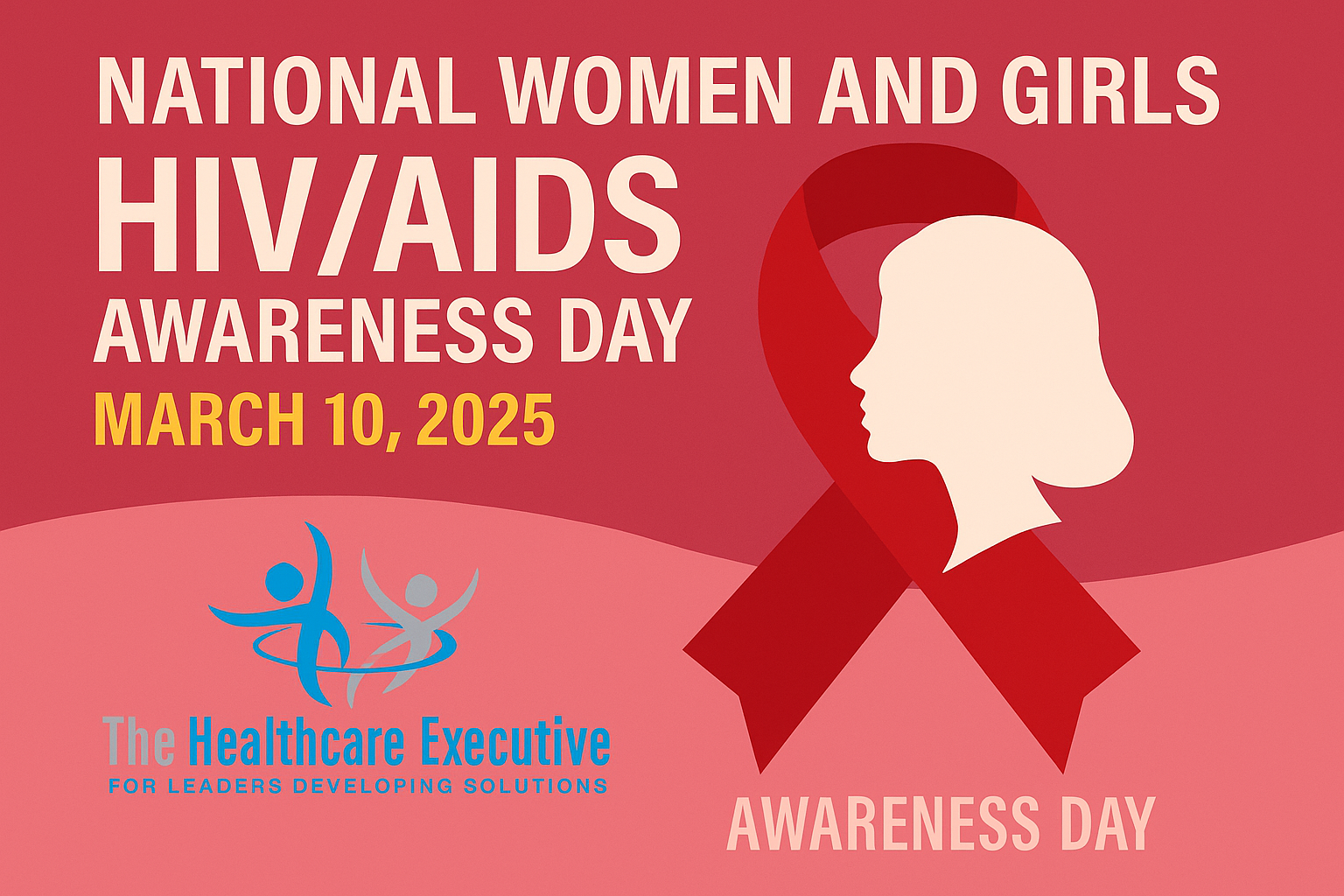Hospital Executives Must Prioritize Equity and Access on National Women and Girls HIV/AIDS Awareness Day 2025

- Posted by Greg Wahlstrom, MBA, HCM
- Posted in Health Observance Calendar
Strategic Leadership Imperatives for Prevention, Inclusion, and Whole-Person Care
Published: March 10, 2025
National Women and Girls HIV/AIDS Awareness Day, recognized on March 10, 2025, presents a crucial opportunity for healthcare leaders to focus on eliminating health disparities among women affected by HIV. According to the HIV.gov, women—particularly women of color—remain disproportionately impacted by the virus in the United States. Hospital executives must champion initiatives that ensure culturally competent, gender-responsive care that acknowledges structural barriers and social determinants of health. Health systems like RWJBarnabas Health are leading prevention campaigns that integrate HIV testing into primary care for underserved women. Executive leaders should evaluate whether their own community outreach programs and OB/GYN departments are aligned with CDC prevention protocols. Investment in community-based organizations and health literacy campaigns can also help close awareness gaps. For hospitals committed to health equity, this observance is a call to action to reassess access, accountability, and outreach efforts. Executives must lead with urgency, not complacency.
A major leadership imperative lies in strengthening partnerships across the HIV/AIDS care continuum. Hospitals should work collaboratively with academic institutions, public health agencies, and nonprofits that specialize in women’s HIV education and care. Institutions like Johns Hopkins Medicine have developed specialized obstetric HIV care programs that address the unique needs of women living with HIV during pregnancy. These clinical models underscore the importance of integrative and trauma-informed care led by multidisciplinary teams. Executives must evaluate how hospital governance supports or hinders the scaling of such programs in rural and urban areas. Internally, medical staff must receive updated training on gender-specific manifestations of HIV and related health risks such as cervical cancer and co-infections. Hospital leaders should also consider how pharmacy access, housing instability, and stigma may compound barriers to care for women. In doing so, they position their institutions as inclusive, equity-driven leaders in HIV prevention and treatment.
Digital health and telemedicine present new opportunities for executive innovation in HIV prevention. During the COVID-19 pandemic, the expansion of virtual care models revealed that many women preferred accessing sexual health counseling and HIV testing remotely. Hospitals such as Mass General have integrated telehealth platforms with routine PrEP (pre-exposure prophylaxis) consultations for at-risk populations. Health system executives should examine whether their digital strategies include proactive outreach to women and girls, especially in communities where HIV stigma remains high. Moreover, mobile health vans and home-testing initiatives—like those piloted by Mount Sinai—can help executives bridge access gaps in low-income neighborhoods. Leveraging patient portals, social media, and targeted email campaigns can significantly improve prevention messaging among younger populations. The executive goal should be simple but bold: eliminate technological blind spots in HIV care delivery for women.
C-suite leaders must also embed HIV equity into their organization’s strategic planning and quality improvement frameworks. This includes incorporating HIV/AIDS metrics into community benefit reporting and clinical performance dashboards. For instance, health systems can monitor and publish disaggregated data on HIV outcomes by gender and race to hold themselves accountable. Organizations like amfAR and the National Institute on Aging offer toolkits for integrating HIV research findings into care protocols. Executive teams should work closely with legal, compliance, and DEI officers to ensure policies reflect current gender and HIV protections under the Affordable Care Act and Title IX. Further, CEOs and CMOs should use this awareness day to host hospital-wide briefings, town halls, and listening sessions to elevate voices from the community and front-line caregivers. Strategic awareness, after all, must be institutionalized through policy, not just posters in the lobby.
Ultimately, National Women and Girls HIV/AIDS Awareness Day 2025 is a leadership benchmark. It offers hospital executives a moment to reflect on what systems, structures, and assumptions still perpetuate care inequities for women. Leaders must push past the rhetoric of inclusion and take tangible, visible steps to reduce infection rates, increase testing access, and ensure compassionate, evidence-based care across the lifespan. Women living with or at risk of HIV are not a niche group—they are patients, caregivers, colleagues, and community members deserving of the highest standard of care. By aligning strategic plans with gender-responsive health equity, executives create a lasting institutional legacy of inclusion and excellence. In 2025, hospital CEOs must lead not only with knowledge, but with conviction—and commit to equity as a core operating principle.
Discover More on Women’s Health Equity and Strategic Inclusion
Learn how your executive team can promote gender-based health interventions and amplify women’s voices in institutional governance and strategy.
Internal Links
- The New Face of Healthcare Leadership: Inclusive Succession Planning Strategies
- Hospital Leadership in Crisis: What Every CEO Must Do in 2025
- Winning the Future of Health: How U.S. Systems Compete with Amazon, CVS, and Optum



